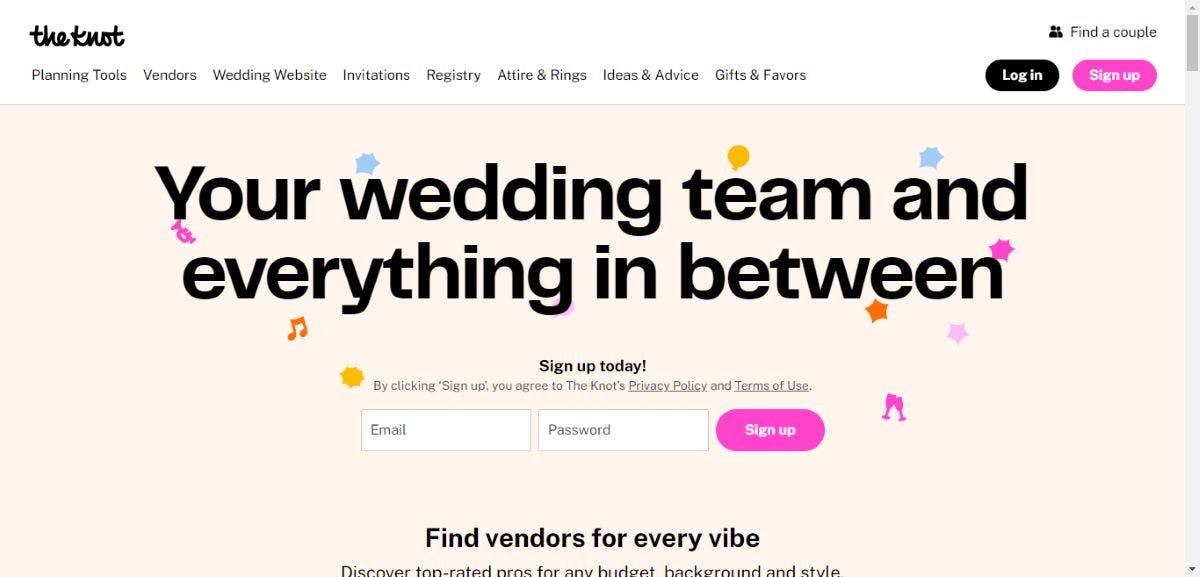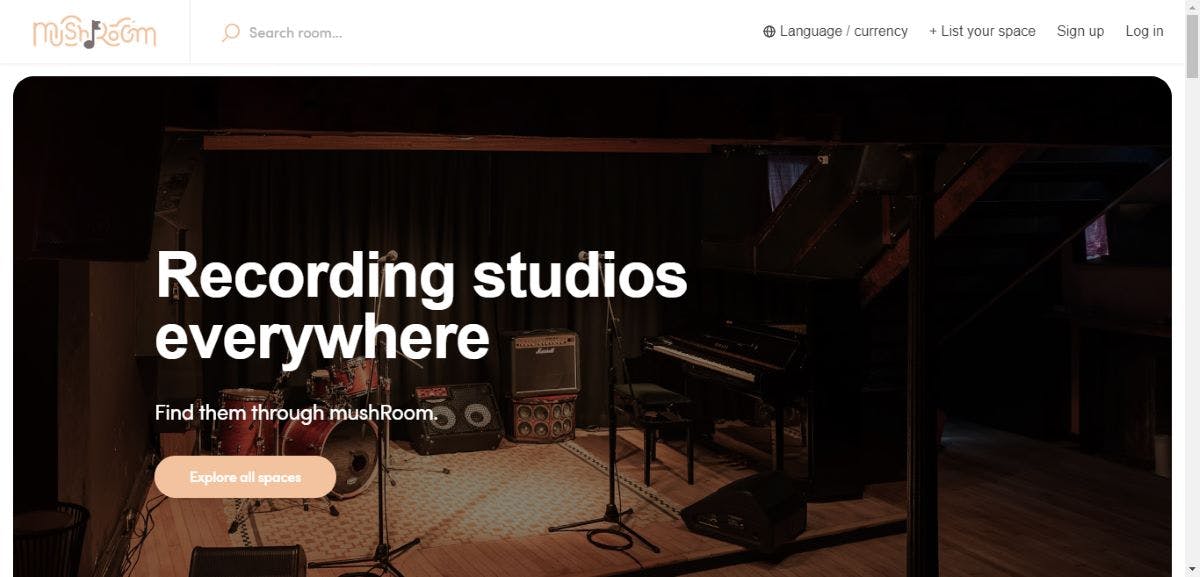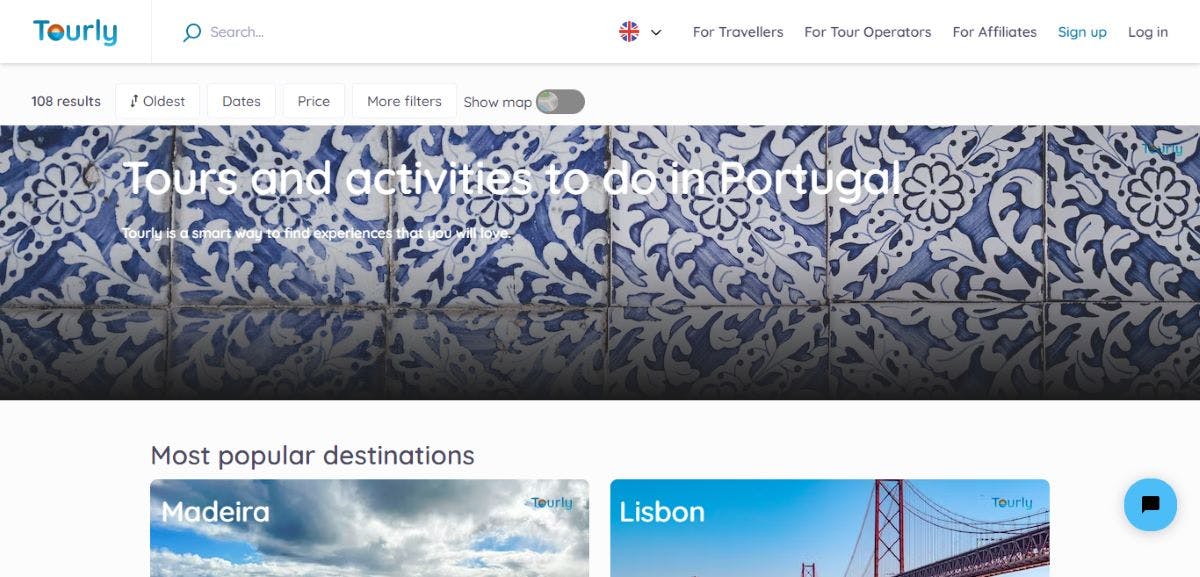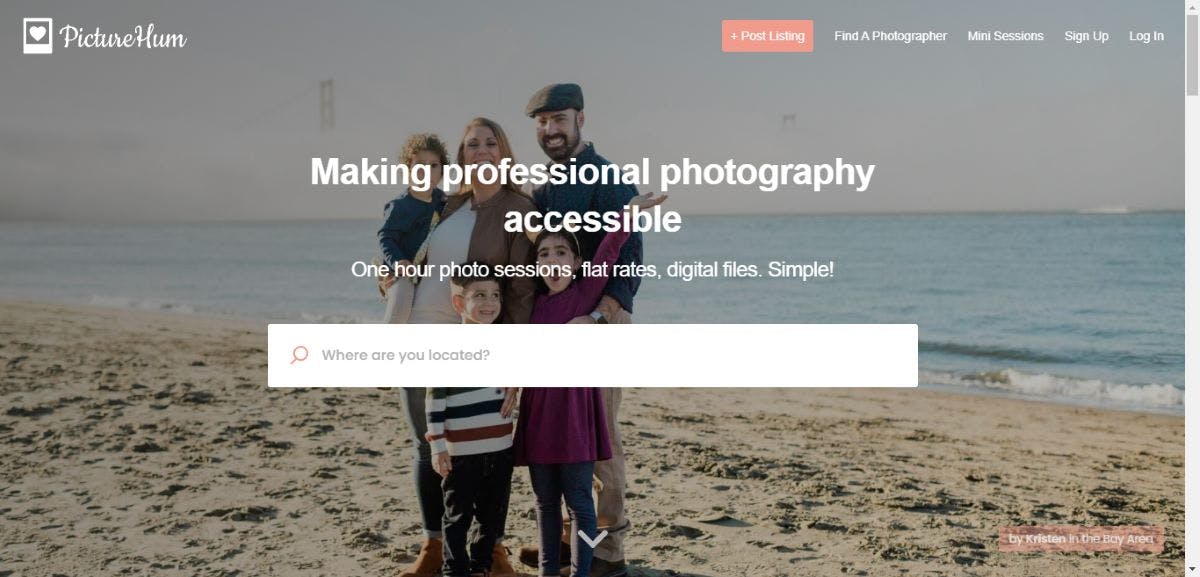How to build a website like Zola
Zola is an online marketplace that lets couples plan and personalize their big day with a wide selection of wedding-related goods and services. How does Zola work? Learn how to design, build, and scale your own marketplace like Zola.
Zola was founded as a wedding registry in 2013 by Shan-Lyn Ma and Nobu Nakaguchi. A big inspiration for them was the impersonal and outdated wedding registries that they encountered when celebrating family and friends getting married.
The co-founders realized they were in the best position to reimagine the wedding planning and registry experience, due to their backgrounds in product design, technology, and merchandising. They quickly joined forces with a former colleague and Gilt Groupe founder Kevin Ryan. A decade later, Zola—a wedding marketplace that ships anywhere within the USA—has expanded its services and is on its way to becoming a unicorn, with a recorded market valuation of $600 million.
Platforms like Fiverr and Airbnb have shown how the marketplace model can be applied to just about any area of business in a way that makes it easy to scale. Furthermore, easy and affordable technology to test marketplace concepts available is now readily available (such as ours at Sharetribe).
Yet, building a marketplace that works isn’t an easy task. Many founders say it’s actually like building two separate businesses: one for the seller side, and one for the buyer side. From day one, you need a solid value proposition for both sides.
In this article, I’ll introduce you to a process that helps you solve this issue by starting small, launching fast, and iterating and improving your business as you go.
Zola’s success can be attributed to its ability to provide a convenient and complete solution for couples planning their wedding. Zola has expanded from a wedding registry to a one-stop shop for engaged couples, offering a wide range of wedding-related products and services, like invitations, registry items, planning tools, and unforgettable experiences.
For sellers, Zola offers access to a targeted, US-wide customer pool – a great value proposition for small business owners with limited marketing budgets.
When a buyer (ie. the happy couple) registers to Zola, they can create their personalized wedding website immediately. From here, it's easy to create their wedding registry with selected gift items from Zola’s marketplace or various other stores.
Couples can then use Zola to find vendors for any wedding service they need, from photography to florists and venues. Vendor reviews help with finding the best fit. In addition, Zola also provides checklist tools that allow couples to keep track of milestones in the planning process for their weddings.
Finally, Zola helps manage interactions with guests, helping with sending out invites, sharing event details, and granting access to the registry. Couples can also use Zola for post-wedding management—like coordinating the thank-you notes to be sent out.
For the vendors, once they’re registered on Zola, they get to add details like a portfolio of their previous work and pricing information. Zola then gives them the visibility to be found and booked by couples.
Bookings are managed on the platform after both parties negotiate a price. Communication can also be handled on Zola— this way, the marketplace provides a way to streamline communication and services and, importantly, allows vendors to manage bookings, payments, and schedules.
Lastly, vendors will receive feedback from couples, and this can greatly improve their visibility on Zola if they do a stellar job.
So, in short: Zola facilitates communication, transactions, and organization for both parties (couples and vendors) within the wedding planning space.
Many successful marketplaces, operate using a commission-based business model. This is one of the most popular marketplace business models as it is the most straightforward to operate.
According to an interview with a Zola co-founder, Zola uses commissions to monetize (apparently as high as 20 to 40% depending on the type of transaction, but their percentages aren’t disclosed publically).
Zola also uses a much less widely-used monetization strategy: lead fee. Sellers on Zola buy credits, which they’ll need to use if they want to respond to an inquiry a couple sends them on the platform.
The combination of business models has worked well for Zola: their recent estimated annual revenue is $120 million.
But the wedding industry is massive – worth over 70 billion in the US alone. Next, let’s look at the best-known competitors sharing the cake with Zola.
Let’s look at some competitors to Zola that offer a similar product/service proposition to users on their marketplaces. Some well-known competitors to Zola in the online marketplace space for wedding planning and registry include:
- The Knot: The Knot is a popular online platform that offers wedding planning tools, vendor directories, and a wedding registry service.

2. WeddingWire: Another major wedding platform, WeddingWire provides vendor reviews, planning tools, and a community forum for couples to share advice and experiences.

3. Brideside: Originally focused on bridesmaid dresses, Brideside has expanded its offerings and now competes in various areas of the wedding industry like providing accessories for interested users.

Note that these are just a few examples of the top competitors to Zola, there are also smaller platforms and local retailers that offer similar services.
It’s also worth pointing out that Zola competes with a few very large players in the wedding registry niche, including Blueprint Registry, Amazon Wedding Registry, and Target Registry.
To take your share of the wedding market, you don’t need to compete with Zola head-on. Very often, small businesses can take on the big players by focusing on tight niches and creating a specialized solution to solve one problem better than the competition.
Here’s how to bring your idea into the real world:
- Validate your assumptions: Validating some of the core assumptions for your marketplace is the pre-step to ensuring your marketplace idea has wings. So while quick launch is important, if you don’t understand the problems your audience has, you may end up launching a desert app that doesn’t really offer value. Make sure you map out the different sections of your business assumptions like value proposition, distribution channels, and revenue streams, because it’s highly likely the assumptions you need to validate are under these aspects.
- Build your Minimum Viable Product: Once you’ve validated your idea, build the first iteration of your marketplace platform. The MVP (Minimum Viable Product) is designed to solve your audience’s issues in the most efficient way possible. It’s minimal, but still something your first few users will love. The MVP approach has several benefits: for starters it lets you test out your pre-validated assumptions with real users. This lets you know if you have a product that truly solves the primary problems of your audience. Once you’ve found your early adopters, you can build more functionality to your marketplace and improve on features the more you learn from your users.
- Build your initial user base: Don’t worry about volume at this stage – worry about liquidity: the likelihood that a seller finds enough customers and a customer finds a good seller on your platform. One way to go about growing your user base is to focus first on the vendor side. This consists of professionals offering goods and services on your Zola-style marketplace. Once you have enough vendors/sellers, you can work on marketing methods to draw in buyers/customers.
- Find the right growth strategies: find the proper growth channels for your marketplace by testing and iterating until you find what works. Don’t give up too easily! Marketplaces take longer to grow than traditional businesses. Growing too fast could even hurt your business if it prevents you from learning and improving your marketplace.
- Learn and iterate as you grow: Launching as quickly as possible with the most important features is best. But once you start growing your marketplace, you want to start investing in features that separate you from the rest and help you provide the most value to your users. So how do you develop these features? Let learnings from your audience impact your decisions. Track their behavior and identify bottlenecks, or conduct interviews to understand the functionality they value the most. Stay committed to improving what you’ve built with what you can learn every day and watch how this keeps you valuable to your niche.
There’s a variety of options for you when it comes to creating your Zola-styled website.
You can:
- Build a marketplace from scratch: Developing a marketplace from scratch is one way you can get a fully customizable platform that is tailored to your needs as far as features and functionality go. While this method gives you a marketplace you can tweak and improve upon whenever you want, it also means you need to know all the backend and frontend code needed for every aspect of software development – or hire a team that does. This means it will either take you a really long time to launch, or a massive budget (most likely north of $50K).
- Build a marketplace with WordPress: WordPress marketplaces are a way to reduce the budgetary demands and technical skills needed to launch a marketplace. Building a marketplace with WordPress involves using WordPress themes and plugins that can be bought and installed on top of WordPress. However, building and maintaining an architecture that relies on several plugins can take up a surprising amount of time. Also, developing any niche-specific custom features may require extensive technical knowledge of the different plugins and a steep initial investment.
- Build a marketplace on top of open-source software: Existing marketplace software comes with the basic functionality required of marketplaces like communication, transaction, and booking features. The drawback is that it still requires a sufficient amount of time and technical skills to launch. Hosting and maintaining your marketplace is also a monthly incurred expense.
- Build with a combination of no-code tools: Using different no-code tools to build your marketplace idea can get you the satisfaction of building functionality from scratch and being a maker – without needing to be a developer. You can create the layout you want to the extent of your understanding of the tools. However, this method requires you to have great knowledge of every essential marketplace functionality. You also need to know how to build that functionality with the tools, which entails a steep learning curve.
- Build with a dedicated no-code SaaS tool: Dedicated no-code SaaS tools help build marketplaces fast. This is by far the fastest way to launch your marketplace idea and validate it with real users. You don’t need to be a coder to launch your site, and hosting, maintenance, and security issues are often included in the subscription. The software may also get updated regularly, helping to keep your functionality up to date with user requirements. However, software providers tend to try and serve as many users as possible. So you may not be able to launch with all of the features you want.
- Develop a marketplace on top of an API-based marketplace SaaS tool: API-based marketplace SaaS tools offer essential marketplace features on which you can build. This method of creating a Zola-type marketplace will give you the speed to launch of a no-code SaaS tool, while also offering the customizability you can only get when you build from scratch. You still need more technical skills than with a no-code SaaS too only, but with the right tool, you can still save up to 90% of the time and cost compared to building from scratch.
When weighing the pros and cons for each marketplace development approach, the determining factors are usually your budget, the time you’re willing to spend building, and the features you want your Zola-style platform to have.
Sharetribe’s marketplace solutions are developed to let you launch fast while minimizing costs. Our unique marketplace builder combines the benefits of no-code and API-first: you can launch and run your marketplace without any coding skills. Hosting, security, and maintenance are included, so you can focus on running your business.
And when it's time to develop your marketplace further, you can easily build any additional functionality you need on top of the no-code features. You can completely change the workflow of your platform, build custom functionality, build a mobile app, and a lot more. If you don’t have development skills on your team, we’ll help you hire a developer from our global network of vetted Sharetribe Experts.
You can create a free 14-day trial for Sharetribe here.
Zola is a vertical marketplace for all things weddings: product selling, rentals, and services. With Sharetribe, it’s possible to similarly combine different transaction types on one platform.
Here are some customers that focus on services, space rentals, and experiences:
mushRoom describes itself as the Airbnb for rehearsal spaces. This marketplace focuses on connecting musicians to hosts and venue providers so they have a place to practice or perform their songs.



Good luck with your marketplace idea!
- How to build a website like Airbnb
- How to build a service marketplace
- How to build a two-sided marketplace
- How to build a B2B marketplace
- How to build a peer-to-peer (P2P) marketplace
- How to create a multi-vendor marketplace
Start your 14-day free trial
Create a marketplace today!
- Launch quickly, without coding
- Extend infinitely
- Scale to any size
No credit card required
